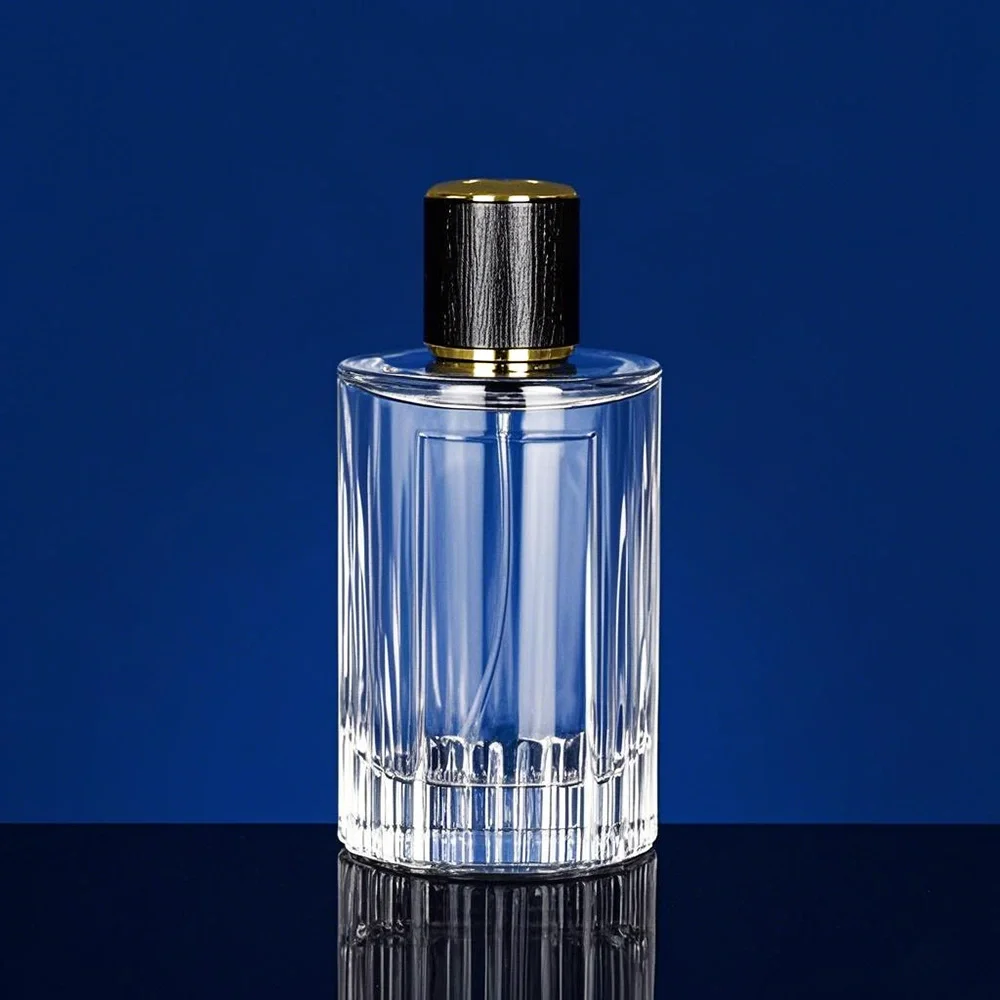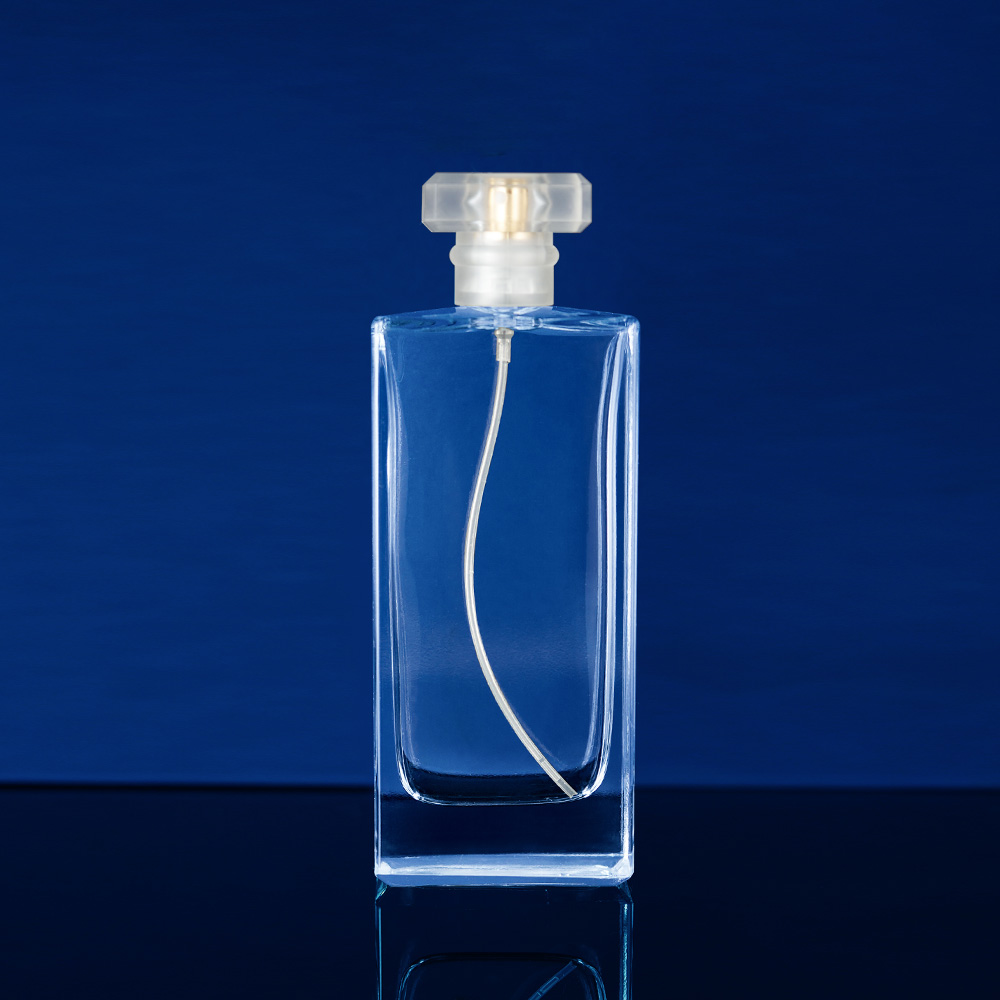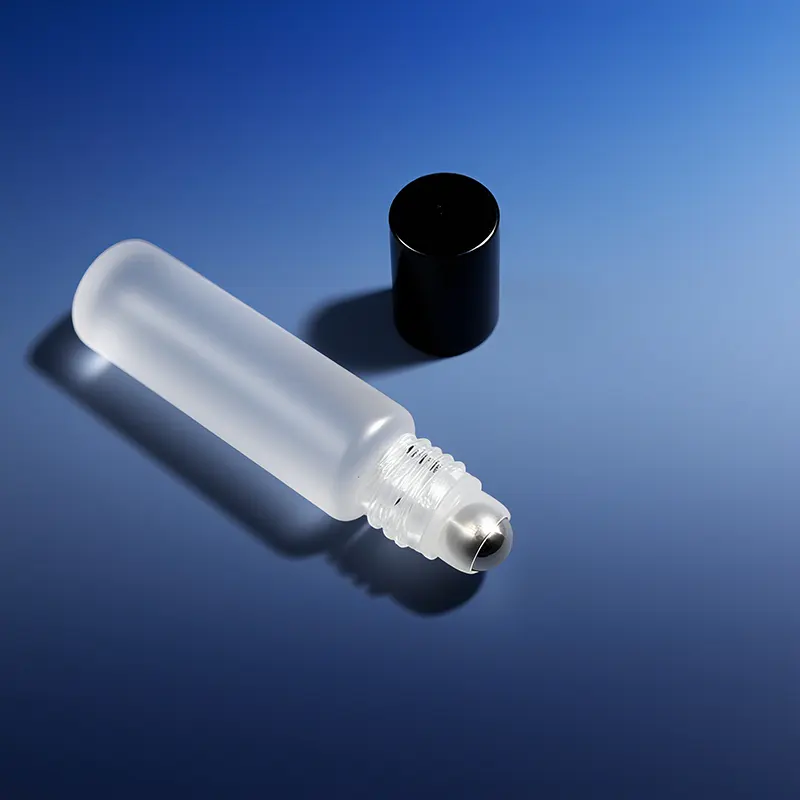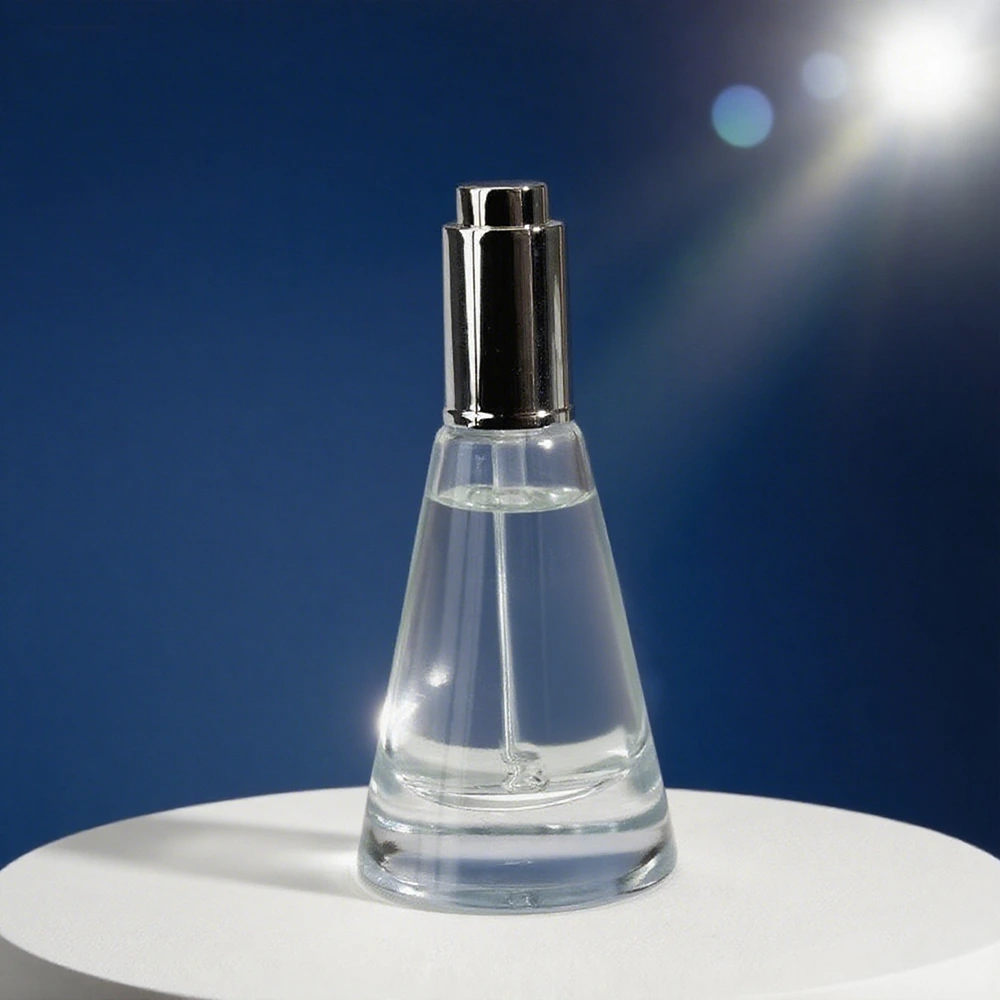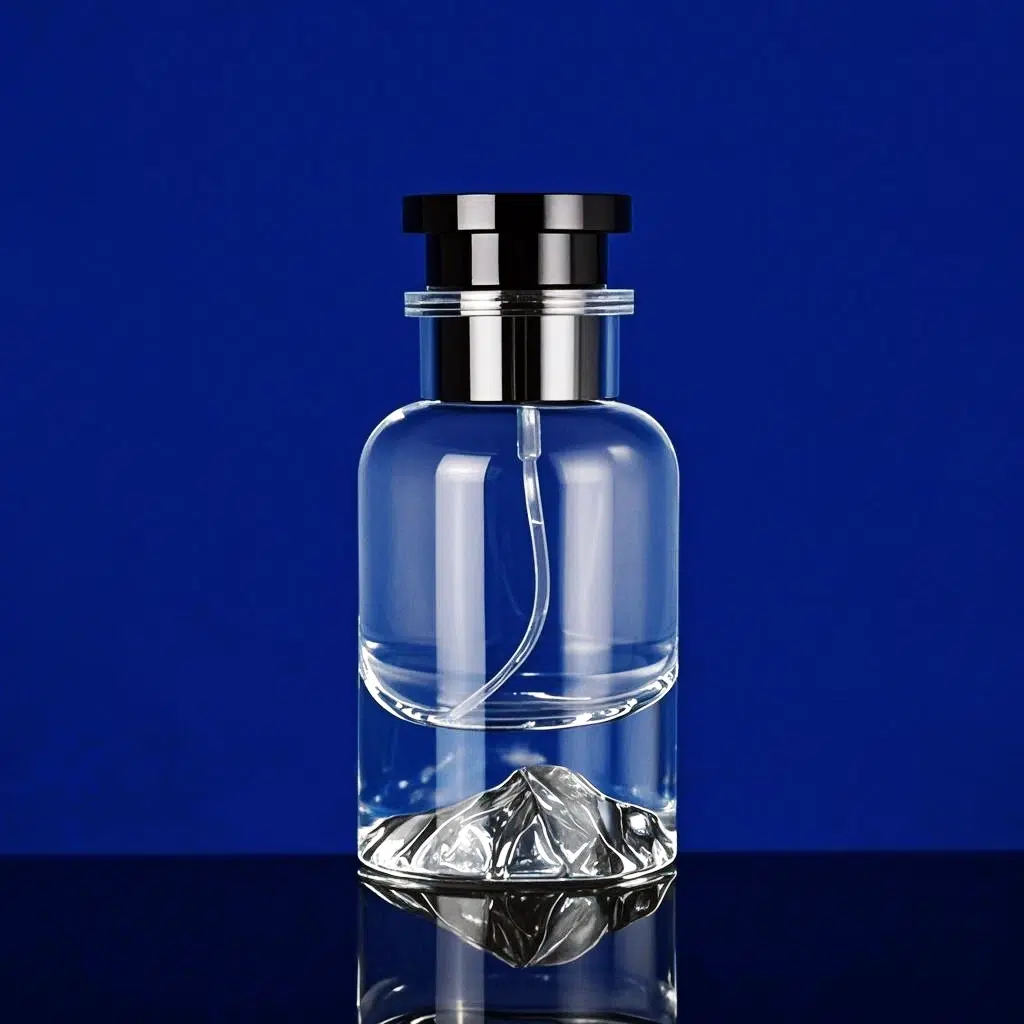
Fremtiden for miljøvenlige æteriske olie-rulleflasker
Indholdsfortegnelse
Markedet for æteriske olier vokser hurtigt. Hvorfor? Fordi flere mennesker ønsker naturlige sundhedsprodukter, og alle bliver mere bevidste om at beskytte miljøet. Denne store forandring betyder, at emballagevirksomheder, især rulleflasker til æteriske olier, er nødt til at finde på nye, miljøvenlige og nyttige løsninger. Denne rapport ser nærmere på de smarte råd, der kræves for at lave vigtige regler, dæmpe nye materialer, ændrede markedstendenser og miljøvenlige løsninger. æterisk olie rulleflaske der virker nu og i fremtiden.
1. Introduktion
Denne rapport forklarer omhyggeligt, hvad "miljøvenlig" emballage egentlig betyder. Den viser nu de gode muligheder, der er tilgængelige, såsom genbrugsglas (post-conjumer recycled eller PCR-glas) og genbrugsplast (forskellige PCR-plasttyper). Den peger på nye muligheder på markedet, oplister vigtige ting at se på leverandører, når de skal vælge, og giver praktiske råd. Disse råd lægger faktisk vægt på at vælge de rigtige materialer, designer ting til genbrug eller genbrug (cirkulært design) og er helt ærlige over for kunderne. Mærker som f.eks. Vesselluxe er på et fantastisk sted, ikke blot til at holde fast i, men faktisk til at lede, det bevæger sig mod mere holdbar emballage til æteriske olier.
2. Globalt pres for bæredygtighed og emballageregler
Den måde, produkter pakkes på verden over, ændrer sig for altid. Dette sker, fordi kunderne ønsker flere miljøvenlige muligheder, og regeringer indfører strenge regler.
2.1. Den Europæiske Unions forordning om emballage og emballageaffald (PPWR)
Fra den 12. august 2026 bliver EU's PPWR en meget stor ny lov. Den er designet til at forhindre emballageaffald, opfordrer kraftigt til genbrug og genbrug og bekæmper brugen af for meget emballage. Hovedmålene er:
- Mindre spild: Formålet med denne regel er at reducere emballageaffaldet med 5-15 % pr. person mellem 2030 og 2040. Dette er en klar indikation af, at de ønsker at reducere miljøtabet.
- Genanvendelig emballage: En vigtig del af PPWR er, at al emballage, der sælges i EU, skal genbruges. Det betyder, at emballagen skal designes, så mindst 70 % af den kan genbruges inden 2030 og 80 % inden 2038. Store ændringer i, hvordan disse ting designes.
- Minimum genbrugsindhold: Fra 1. januar 2030 skal plastemballage indeholde en vis mængde genbrugsmateriale (PCR-materiale) mellem 10-35%. Der vil også være strenge regler for plastik, der bruges til ting som mad eller makeup.
- Mindre og tydeligere etiketter: Reglen fastslår tydeligt, at emballagen skal være så lille som muligt, med højst 50% tom plads. Dette kræver også en tydelig etiket over, hvad emballage er, og hvordan den kan genbruges, hvilket giver kunderne nyttige oplysninger.
- Begrænsninger: PPWR begrænser også visse ting, såsom engangsemballage til makeup på hoteller fra 2030. Det begrænser også brugen af skadelige kemikalier kaldet PFAS i emballage, hvilket hjælper med at beskytte miljøet og menneskers sundhed.
2.2. Californiens SB 54 (lov om forebyggelse af plastforurening og producentansvar for emballage)
SB 54 i Californien, som trådte i kraft den 30. juni 2022, er en banebrydende lov kaldet Expected Producer Responsibility (EPR). Denne lov flytter dybest set omkostningerne og indsatsen ved at håndtere plastikforurening fra byer og skatteydere til virksomheder, der producerer plastikemballage. Inden 2032 er den rettet mod store mål:
- Skær ned og genbrug: En reduktion på 25 % i plastikforbruget, hvilket sikrer, at al emballage er 100 % genanvendelig eller komposterbar, og 65 % genbrug af engangsplastikemballage. Dette vil medføre store forandringer.
- EPR og gebyrer: Emballagevirksomheder bør tilslutte sig en særlig gruppe (producentansvarsorganisation eller Pro), der er godkendt af staten. Denne gruppe betaler og administrerer, hvordan affald indsamles, sorteres og genbruges. De gebyrer, der betales til disse virksomheder, vil ændre sig afhængigt af, hvor miljøvenlig deres emballage er, hvilket tilskynder dem til at vælge grønne materialer.
2.3. Udvidet producentansvar (EPR) - Globale tendenser
EPR-programmer, der juridisk gør virksomheder ansvarlige for miljøpåvirkningen af deres produkter og emballage fra start til slut, bliver hurtigt almindelige på verdensplan. Disse programmer vil kræve, at de ikke længere er EU-lande inden udgangen af 2024, og de vokser hurtigt i Nordamerika (såsom Canada og nogle amerikanske stater) og Asien-Stillehavsområdet (APAC). En fælles del af disse programmer er, at gebyrerne ændres på baggrund af miljøvenlig emballage. Det betyder, at virksomheder belønnes for at lave emballage, der er let at genbruge, bruger genbrugsmaterialer eller kan genbruges. Dette er med til at skabe en "cirkulær økonomi", hvor ting bruges gentagne gange.
2.4. Påstande om 'komposterbar' og 'biologisk nedbrydelig' - kontrolleres nøje
Regeringer verden over ser meget nøje på påstande som 'biologisk nedbrydelig' og 'komposterbar'. De ønsker at forhindre virksomheder i at vildlede kunder (greenwashing) og sikre, at folk kan stole på det, de køber. Disse påstande bør være superklare, videnskabeligt bevist og stærkt understøttet af specifikke, anerkendte internationale regler. For eksempel er EN 13432 standarden for ting, der kan komposteres i industrielle faciliteter. Den kræver, at materiale går i stykker under visse betingelser inden for en fastsat tid. Dette er faktisk vigtigt for brands at kunne sige, at noget vil gå i stykker (såsom en industriel kompost, en husgødningsbunke eller havet), og hvor lang tid det vil tage. Et materiale, der går i stykker ét sted, kan ikke gå i stykker et andet. Falske påstande kan faktisk skade et brands omdømme og medføre store bøder.
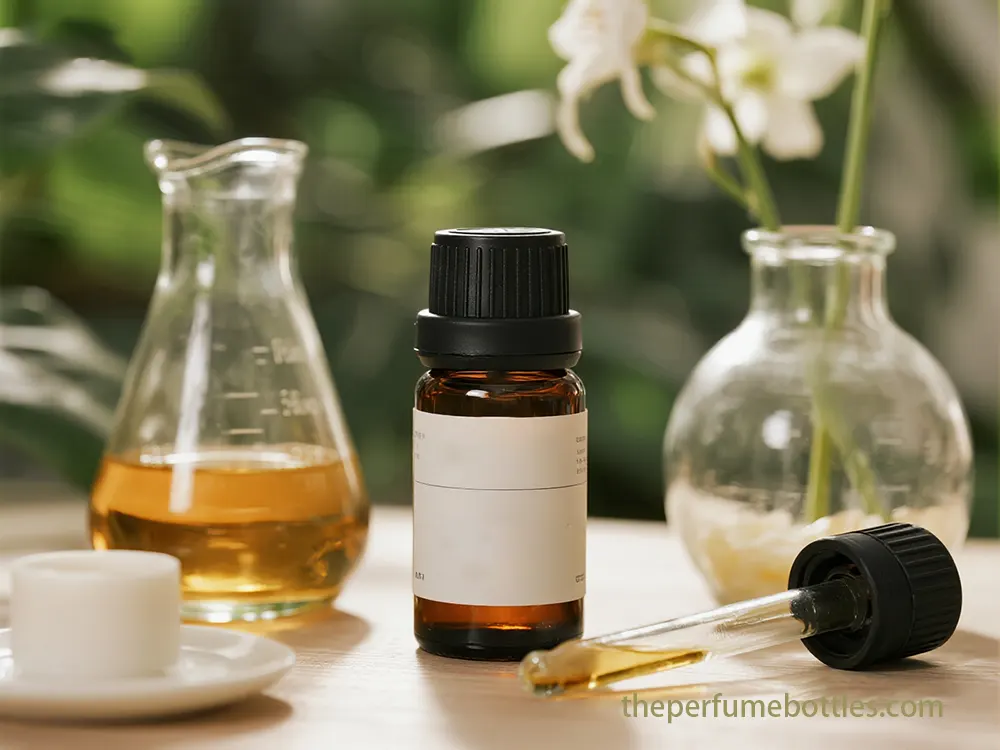
Få gratis prøver
2.5. Regler for specifikke emballagebestemmelser for æteriske olier/kosmetikprodukter (EU)
Når æteriske olier sælges på huden eller til aromaterapi, skal de ofte følge EU's makeupregler (EF-nummer 1223/2009). Disse regler fokuserer primært på at sikre, at produkterne er sikre, at materialerne er klare, og at etiketten indeholder specifikke oplysninger. Derudover skal æteriske olier, der anses for farlige, følge endnu flere regler (såsom CLP-forordningen). Nye PPWR-regler, der forbyder engangsemballage til makeup, især på hoteller, påvirker direkte, hvor små emballager til æteriske olier er designet. Det presser mærker til at bruge genbrugs- eller genopfyldningsmuligheder.
2.6. Miljøvenlige emballageplaner i Asien og Stillehavsområdet
Asien-Stillehavsregionen (APAC) er hurtigt ved at blive førende inden for brugen af miljøvenlig emballage. Dette sker, fordi flere kunder ønsker miljøvenlige produkter, regeringer laver vanskelige regler, og folk er mere opmærksomme på plastikforurening. Vigtige bestræbelser omfatter lande som Indien, Sydkorea og Australien, som gør EPR-politikker obligatoriske. Derudover er der flere "plastikpagter" og frivillige løfter fra virksomheder om at arbejde sammen om at reducere plastikaffald og forbedre genbrug.
3. Hvad gør æteriske olie-rulleflasker miljøvenlige?
Faktisk for at finde ud af, om æterisk olie rulleflaske er miljøvenlige, skal du se hele deres proces, fra modtagelse af råmaterialer til bortskaffelse af dem.
3.1. Vigtige miljøvenlige funktioner
- Biologisk nedbrydelighed: Det betyder, at et materiale naturligt kan nedbrydes til harmløse ting som vand, CO2 og plantestoffer, takket være små levende organismer, uden at efterlade de dårlige stoffer.
- Genanvendelighed:Det handler om, hvor nemt og godt et materiale kan indsamles, forarbejdes og omdannes til nye produkter. Dette forhindrer det i at havne på lossepladser og sparer nye ressourcer.
- Genopfyldningsmulighed/genbrugelighed:Emballage, der kan bruges mange gange, reducerer brugen af nye ingredienser og giver mindre spild. Dette inkluderer systemer, hvor du kan genbruge din flaske eller sende den tilbage for at rengøre og genbruge den.
- Genbrugsmateriale (PCR):Dette er indholdet af efterfølgende forbrugere (PCR) i ny emballage fra gamle produkter, som forbrugerne smider ud. Det er med til at skabe en "cirkulær økonomi" og betyder, at vi ikke behøver at bruge mange mærker.
- Kulstofaftryk: Dette betydelige tal viser den samlede mængde drivhusgasser (f.eks. CO2), der frigives i løbet af emballagens levetid, fra indhentning af materialet og fremstillingen, forsendelsen og endelig bortskaffelsen.
- Ressourceudtømning: Det ser ud til, at indkøb og fremstilling af materialer bruger begrænsede naturressourcer såsom olie, mineraler og vand.
- Affaldsproduktion: Den måler alt det affald, der skabes i løbet af emballagens levetid, især hvor meget det fjernes fra lossepladsen eller forbrændes ved hjælp af genbrug, gødning eller genanvendes.
3.2. Hvordan vi måler miljøpåvirkning (LCA og KPI'er)
Livscyklusevaluering (LCA) er den bedste måde at undersøge produktets miljøpåvirkning på med en standardmetode (ISO 14040/14044), fra start til slut ("Cradle to Grave" eller "Cradle to Cradle"). For æterisk olieemballage er vigtige målinger (vigtige præstationsindikatorer eller KPI) normalt CO2-aftryk (hvor meget CO2), hvor meget energi og vand der bruges, hvor mange naturressourcer der bruges, og hvor meget affald der produceres. Specielle computerprogrammer som Simapro og Echinvent bruges ofte til LCA, hvor store mængder miljødata bruges. Men det er vanskeligt at få præcise og fuldstændige oplysninger fra alle de forskellige dele af den globale forsyningskæde. Typisk opstår de største miljøproblemer i emballage, når råmaterialer dannes (såsom energien til at smelte glasset eller til at fremstille plastkemikalier), og når emballagen bortskaffes, genbruges den ikke eller gødes korrekt.
4. Nuværende miljøvenlige materialer og designidéer
Virksomheder, der fremstiller rulleflasker til æteriske olier, leder efter miljøvenlige materialer og fede nye designs. De skal finde en balance mellem at være godt for planeten og at holde produktet sikkert, funktionelt og pænt.
4.1. Glasemballage: Det bedste valg, nu med genbrugsmuligheder
Glas har altid været en populær løsning til æteriske olier, da det ikke reagerer med sarte oliematerialer. Mørkt glas (såsom rav eller blåt) beskytter også olierne mod UV-lys og holder dem effektive. Genbrugsglas (PCR-glas) bliver mere almindeligt og bruger ofte 70% genbrugsmaterialer. Dette reducerer den energi, der kræves til fremstilling, betydeligt og reducerer CO2-forureningen sammenlignet med at lave nyt glas. Men det er vanskeligt at lave glas med 100% genbrugsmaterialer, fordi der ikke altid er nok genbrugsglas af høj kvalitet tilgængeligt. Derudover bruger fremstilling af mærkeglas stadig for meget energi, fordi det kræver meget temperatur at smelte.
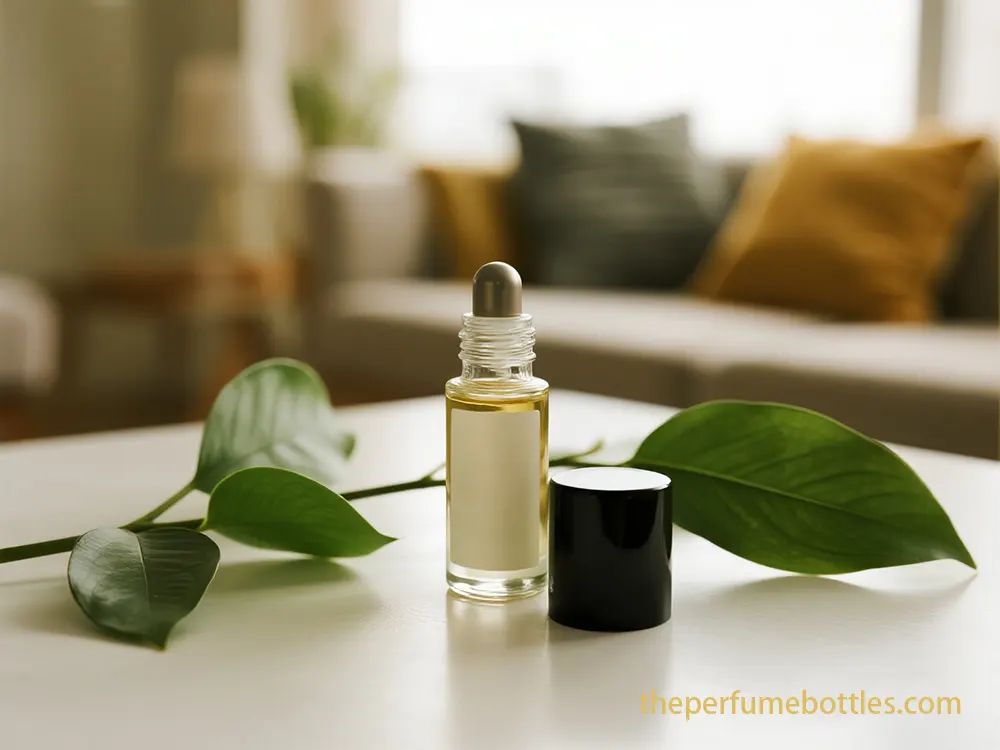
Få gratis prøver
4.2. Genbrugsplast (PCR-plast): Lettere, mindre kulstof, men kan se anderledes ud
Genbrugsplast (PCR-plast) er en god mulighed. De forårsager meget mindre miljøskade sammenlignet med ny plast og har vist sig at have 79-86 % mindre CO2-forurening. Du kan få dem i forskellige mængder af genbrugsmaterialer, men en blanding på 30-60 % er ofte den bedste, afhængigt af deres funktion og deres pris. PCR-plast, såsom PCR PP (polypropylen) til CAPS og PCR PET (Polyethylen Terefthelet) flasker, er meget gode til at modvirke modstridende kemikalier, hvilket er vigtigt for æteriske olier. Der er dog stadig problemer. De kan se lidt grå eller matte ud, have små sorte pletter eller ujævne farver. Dette kan være et problem for fancy mærker. Det kan også være vanskeligt at behandle dem, da kvaliteten af genbrugsplast kan variere. Genbrugsplast til makeup er normalt dyrere. Regler som AB 793 i Californien kræver hurtig plastemballage, som indeholder en minimal mængde genbrugsmateriale, hvilket fremskynder brugen.
4.3. Aluminiumshætter og rullekugler: Stærke og genanvendelige
Aluminiumslåg er fantastiske, fordi de er lette, superstærke og virkelig kan genbruges, hvilket gør dem til en god mulighed for rollerball-flasker til æteriske olier. Fremstilling af nyt aluminium bruger for meget energi, men genbrug af aluminium er meget lidt. Én ting at se med æteriske olier er, at nogle meget sure eller reaktive olier kan afvise aluminium. Dette kan betyde, at der kræves en særlig indvendig foring eller forskellige typer aluminium. Rollerball-kugler, som er vigtige for at påføre olie, findes i hårde materialer: rustfrit stål er populært, fordi det ruller glat, rent og stopper lækager rigtig godt; plastik-rollerball-kugler er billige og lette; og glasset føles som en rollerball-kugle og reagerer ikke med kemikalier.
4.4. Design til genbrug: Genopfyldelig og enkel
Mærkerne bruger i stigende grad "cirkulært design", hvor ting genbruges. Genopfyldelige systemer bliver meget populære som en stærk måde at reducere engangsaffald på. Disse systemer kan være forskellige: Stærke, forstærkede glasflasker, lette genopfyldningsposer lavet af fleksibelt tilbehør eller endda genopfyldningsstationer i butikker, hvor du kan fylde din flaske. For at fungere godt for disse systemer skal de være nemme at bruge, enkle, super rene at genopfylde og, vigtigst af alt, stoppe lækager. Samtidig passer enkle designs, der bruger lave materialer og enkle former, perfekt til den "lave" idé om stabilitet. På denne måde bruges ikke kun lave materialer, men ofte opretholdes et smart udseende, og det fungerer endda perfekt, hvilket appellerer til kunder, der er interesserede i syltede agurker.
5. Nye og fremtidige idéer inden for bæredygtig emballageteknologi
Faktisk fører den kontinuerlige opdagelse af virkelig miljøvenlige rulleflasker med æterisk olie til nye ideer på avancerede måder at skabe både materialer og ting på.
5.1. Avancerede genbrugsteknologier
Avanceret genbrug, også kendt som kemisk genbrug, er en stor ny måde at håndtere affald på. Regelmæssig genbrug sorterer og smelter blot plastikken. Men avanceret genbrug nedbryder blandet, beskidt eller svært genbrugelig plastik i deres små byggesten (molekyler). Metoder som pyrolyse (opvarmning uden ilt) og dipolimisering (nedbrydning af plastik i deres originale dele) danner nye plastmaterialer. Man kan ikke skelne dem fra plastik lavet af olie, gas eller kul. Det betyder, at de er fantastiske til vigtige anvendelser, såsom emballage til æteriske olier, hvor det er vigtigt at være superren og fuldt funktionel. Uanset dette bruger det normalt mere energi og medfører flere omkostninger, viser undersøgelser (livscyklusvurdering eller LCA) at det reducerer drivhusgasser betydeligt end at skabe ny plastik fra fossile brændstoffer. Mere statslig støtte, især fra EU's PPWR, øger efterspørgslen efter disse materialer. Særlige sporingssystemer som ISCC Plus-certificering er super vigtige for at sikre, at man kan finde ud af, hvor det genbrugte materiale kommer fra, og bevise, at det er i det endelige produkt. Det forklarer tingene for brands og kunder.
5.2. Biobaserede plasttyper (polymerer)
Biobaserede plastolier er lavet af plantematerialer i stedet for olie, gas eller kul. Dette er en optimistisk måde at være mindre afhængig af kemikalier fra fossile brændstoffer. Eksempler inkluderer PLA (fra polymælkesyre, majsstivelse eller sukkerrør), PEF (polyethylenfuranoat, plantesukkerarter) og PHAS (fremstillet af polyhydroxalaxlacater, fremstillet af bakterier). PLA, normalt fra majsstivelse eller sukkerrør, er meget klar og stiv, så det kan bruges til nogle flasker. PEF, ofte fra plantesukkerarter, er fantastisk til at blokere ilt og CO2, hvilket kan gøre produkter længere. Phas fremstillet af bakterier er specielle, fordi de let nedbrydes mange naturlige steder, såsom jord og hav. Men der er stadig store udfordringer: at sikre, at de alle fungerer godt med separate, stærke æteriske olier, at de er i stand til at producere enorme mængder til masseproduktion, at mange af disse plasttyper er i stand til at skabe gødning til industriel fremstilling af gødning, debat om at bruge afgrøder til plastik, og generelt højere omkostninger end almindelig plastik.
5.3. Svampe (mycelium) og tangmaterialer
Disse nye materialer lavet af svampe (mycellium) og tang er super miljøvenlige og virkelig innovative. De er nu fantastiske til udvendig emballage og kan også bruges til hovedemballagen senere. Mycelliumindhold dyrket fra svamperødder ved hjælp af landbrugsaffald (f.eks. ganja eller majsstængler) er en revolutionerende erstatning for styrofoam. De er fantastiske til polstring, isolering og kan lave gødning derhjemme. Dette gør dem perfekte til beskyttende indsatser eller specialfremstillede dele i æterisk olieemballage. Plast fremstillet af havalger undersøges til mange anvendelser, såsom fødevareemballage og smart emballage. Deres fordele omfatter udvinding fra vedvarende kilder, hurtig vækst og naturlig nedbrydning. Både mycelium og havalgematerialer skal være billigere for at konkurrere med kroniske materialer. Mycelium skal også være bedre til at modstå fugt for at kunne bruges mere. Men faktisk er deres kapacitet til cirkulær emballage (hvor alt genbruges) enorm og værd at investere og udvikle konsekvent.
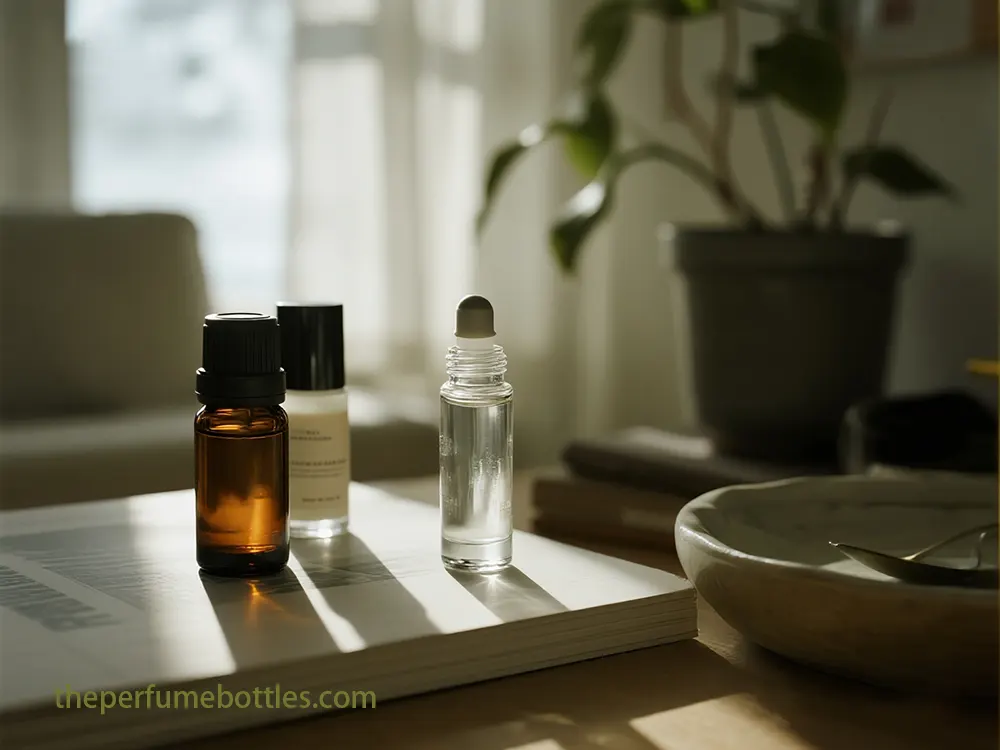
Få gratis prøver
6. Markedsanalyse og muligheder
Markederne for æteriske olier og miljøvenlig skønhedsemballage vokser hurtigt. Dette er drevet af ændrede kunders smag og strengere regeringsregler.
6.1. Markedsvækst og årsager hertil
Oliemarkedet, der af mange stærke årsager er afgørende, forventes at stige med 37,25 milliarder dollars inden 2029. Disse omfatter en konstant efterspørgsel efter naturlige og biologiske produkter, et stort fokus på sundhed på verdensplan og en bred miljøbevidsthed, der køber alle. Samtidig vokser markedet også hurtigt for miljøvenlig skønhedsemballage. Dette skyldes, at kunderne ønsker det (mere end 50 % er optaget af stabilitet, når de køber skønhedsprodukter), mere pres end regler, og at mærkerne er store løfter om at beskytte miljøet.
6.2. Hvad kunderne kan lide, og hvad de vil betale for
Kunderne viser tydeligt, at de foretrækker permanent emballage. Mere end 60 % af kunderne foretrækker aktivt emballage, der er god for miljøet, og er villige til at betale omkring 9,7 % mere for hele 74 % miljøvenlige produkter. De foretrækker især genbrugsglas eller aluminium, emballage lavet af ydre emballage, der tydeligt brydes naturligt, og let anvendelige alternativer. Vigtigst af alt, selvom holdbarhed er en stor grund, er det stadig super vigtigt, hvordan det ser ud, og hvor godt det fungerer. Kunderne håber, at miljøvenlig emballage ser godt ud og fungerer perfekt.
6.3. Forskellige kundegrupper
General Z og Millennials er de primære grupper, der følger trends inden for permanent emballage. Aldersgruppen 18-24 (General Z) er klar til at betale mere for 90% af ung holdbar emballage, hvilket viser, hvor meget de bekymrer sig om miljøet. Denne gruppes købekraft og indflydelse vokser hurtigt, hvilket gør dem til en meget vigtig målgruppe at nå. Derudover er rige husstande konstant villige til at betale mere for permanente produkter, hvilket betyder, at miljøvenlige muligheder kan sælges til højere priser i dele af markedet.
6.4. Forskelle rundt om i verden
Europa fører i øjeblikket markedet for æteriske olier på grund af sin lange historie med naturlige midler og klare regler. Nordamerika går dog efter beholdere til æteriske olier takket være sin stærke kundebase og kreative emballageindustri. Asien-Stillehavsregionen (APAC) forventes at være det hurtigst voksende marked for både æteriske olier og miljøvenlig emballage. Denne vækst sker, fordi folk har flere penge at bruge, middelklassen vokser, flere mennesker flytter til byerne, og kunder i steder som Kina, Indien og Sydøstasien foretrækker økologiske og naturlige materialer.
6.5. Sociale mediers magt og bekymringer om "greenwashing"
Sociale medier har forvandlet emballagen til noget kraftfuldt med blot en beholder, der rent faktisk påvirker, hvad kunderne tænker og køber. Flot og konstant designet emballage kan være super populær og sprede et brandbudskab vidt og bredt. Men kunderne bliver også klogere og er meget bevidste om "greenwashing" (når virksomheder foregiver at være miljøvenlige). For at tro på det og tro på det, skal brandet være fuldstændig ærligt, tydeligt forklare deres stabilitetsindsats og stolt vise pålidelige certifikater fra andre grupper (såsom USDA Organic, B. Corp, FSC, Cradle to Cradle). At være ærlig og påstå påstande kan bevise, at det er super vigtigt i dagens digitale verden.
7. Sådan vælger du leverandører til bæredygtige reservedele
Det er ikke bare vigtigt at arbejde med de rigtige leverandører; det er absolut vigtigt at kunne lave permanente rulleflasker til æteriske olier med succes og producere dem massivt. Der findes mange forskellige leverandører verden over, især i Kina, hvor der findes mange specialproducenter. Disse producenter tilbyder flere dele, såsom en god aluminiumslåg, en række forskellige glastyper (inklusive mørkt glas, der blokerer UV-stråler, og genbrugsglas) og flere og flere muligheder for genbrugsplast. De tilbyder også separate rulleflasker (rustfrit stål, plastik, glas) og andre ekstra dele. Ofte kan leverandører i denne branche tilpasse mange ting og tilbyde en "one-stop-løsning" for at gøre det nemmere at købe dele til mærker.
7.1. Sådan tjekker du leverandørerne
En stærk og fuldstændig metode til at kontrollere leverandører skal blot ses ud over omkostninger og kvalitet. Den bør også omfatte, hvordan de klarer sig inden for miljø, sociale forhold og god selskabsledelse (ESG), samt hvor effektive de er, og hvor økonomisk stabile de er.
A. Miljøpræstation:
- Certificeret materiale: Udvælg leverandører, der leverer materialer med et dokumenteret certifikat for naturlig nedbrydning, som er fremstillet af vedvarende kilder og en masse genbrugsmaterialer.
- Reduktion af CO2-aftryk: Tjek, hvad leverandøren har gjort og har bevist for at reducere dit CO2-aftryk (deres samlede drivhusgasemissioner), såsom at bruge lavenergi og skifte til vedvarende energi.
- Ressourceeffektivitet: Se hvor meget vand de bruger, deres programmer til at reducere affaldsmængden, og hvor meget de får deres råmaterialer med ansvarlighed.
- Affaldshåndtering: For at håndtere affald, tjek deres komplette planer, hvor meget genbrug de genbruger, og hvordan de bortskaffer farligt affald korrekt.
- ISO 14001-certificering: Se på dette internationale certifikat (ISO 14001), som viser, at de har gode miljøledelsessystemer.
- Produktintegritet: Sørg for, at emballagematerialerne holder de æteriske olier gode ved at udføre grundige tests for at nedbryde dem eller forhindre dem i at blive snavsede.
B. Socialt ansvar:
- Etiske arbejdsmetoder: Kontroller, at de følger internationale arbejdsregler, betaler korrekt løn, tilbyder en sikker arbejdsplads og ikke anvender børn eller tvangsarbejde (f.eks. SA8000-certifikat).
- Engagement i lokalsamfundet: Se hvordan leverandøren hjælper lokalsamfundene.
- Ansvarlig indkøb: Sørg for, at råmaterialerne indkøbes på en retfærdig og miljøvenlig måde, undgå ting som "konfliktmineraler" eller fæld skovene.
C. Styring (Hvordan de drives):
- Gennemsigtighed: Bed om klare oplysninger om deres drift, forsyningskæder og ESG-rapporter.
- Hørbar ESG-rapportering: Se efter regelmæssige ESG-rapporter, der er blevet kontrolleret af uafhængige eksperter.
- Overholdelse af regler: Bekræft, at de nøje følger miljø-, arbejds- og emballagereglerne (f.eks. EPR, FTC Green Guide, Access).
- Stærk forsyningskædestyring: Kontroller, om leverandøren kan håndtere risikoen, drive tingene gnidningsløst og opretholde kvaliteten i sin forsyningskæde.
D. Certifikat fra andre grupper:
- Nøglen til at bevise påstande: FSC (One Stewardship Council) for papir/træ i vigtige certifikater, RCS (standard for genbrugsmaterialer) for PCR-indhold, TNV Østrig (for gødning), BPI (Institut for bionedbrydelige produkter), Cradle to Kraddle (for cirkulært design), ISO 14001 (B. Corp Corporel og B Corp Corporel og B. Corp Corporel og B. Corp Corporel) beviser, at deres påstande om stabilitet er reelle.
E. Nye teknologier og idéer:
- Investering i forskning: Se om leverandøren investerer i forskning og udvikling af måder at skabe nye holdbare materialer og ting på.
- Avanceret behandling: Se efter deres evne til at bruge avanceret genbrug, fremstille plantebaseret plastik eller bruge andre nye teknikker.
- Digitale værktøjer: Tjek om de bruger digitale værktøjer som blockchain for at bedre kunne spore deres forsyningskæde og smarte kontrakter for at sikre et effektivt arbejde.
- Ekspertråd: De bedste leverandører tilbyder ofte ikke kun produkter, men også specialrådgivning, markedsinformation og hjælp til at løse problemer i fællesskab.
F. finansiel stabilitet:
- Langsigtet og udviklingsmæssigt: Tjek leverandørens økonomiske sundhed, tidligere præstationer og udvikling, så de kan blive en langsigtet partner.
- Omkostningsbesparende løsninger: Se om de kan tilbyde gode priser og nye løsninger, der sparer penge i hele produktets levetid.
- Markedsindsigt: Led efter leverandører, der kan give nyttige oplysninger om nye trends, tilgængelige materialer og ændringer i regler.

Få gratis prøver
8. Smarte råd og produktudvikling
Mærker, der ønsker at være førende inden for miljøvenlige rulleflasker til æteriske olier, skal være komplette, ærlige og altid innovative. De skal indbygge bæredygtighed i alle dele af, hvordan de skaber produkter og markedsfører dem.
8.1. Valg af materialer og design
- Fokus på genbrug: Til hovedemballagen skal du vælge mørkt genbrugsglas af høj kvalitet (PCR-glas) med 40-70% genbrugsmaterialer. Det beskytter produktet og hjælper miljøet. Til låg og andre plastikdele skal du bruge genbrugsplast af god kvalitet (PCR PP eller PET) med 30-60% genbrugsmaterialer. Overvej at bruge ensfarvede, ikke-gennemsigtige farver for at skjule eventuelle problemer med udseendet, der nogle gange er forårsaget af genbrugsplast. Overvej aluminium til låg, men vær forsigtig med visse æteriske olier, der sandsynligvis kan bruges i dem. Sørg for at bruge den rigtige indvendige foring, hvis det er nødvendigt.
- Gør det genopfyldeligt og genanvendeligt: Design, der styrker hovedemballagen og ser godt ud, så den kan genbruges flere gange. Skab et nemt og rent genopfyldningssystem, f.eks. en simpel genopfyldningspose eller genopfyldningsstationer i butikken. Sørg for, at vigtige dele såsom rollerball-huset og lågene er meget præcist designet for at forhindre lækager, måske ved at bruge specielle designs såsom Springlock™-rollerball for ekstra sikkerhed.
- Udforsk nye ideer (fremtidige muligheder):Hold aktivt øje med nye plantebaserede plastmaterialer (PLA, PEF, PHA) for at finde dele, der passer godt til dem. Vær opmærksom på materialer lavet af affald eller ikke-fødevareplanter, så de ikke konkurrerer med fødevarer. Udforsk nye ingredienser såsom udvendig emballage (såsom beskyttende indsatser) eller endda ny hovedemballage som svampe (mycellium) eller marine algekompositter. Dette sikrer, at de gennemgår hårde tests for at sikre, at de fungerer med kemikalier og forbliver stabile. At få genbrugsmaterialer af høj kvalitet (PCR'er) er som smarte partnerskaber med avancerede genbrugsvirksomheder. Sørg for, at disse materialer har stærke certifikater, der beviser deres genbrugsindhold.
- Enkelt design i ét materiale:Gør design enklere ved at bruge mindre materiale samlet set. Det reducerer ressourceforbruget og gør produktionen nemmere. Prøv kun at bruge én type materiale, når det er muligt. Dette gør det meget nemt at sortere til genbrug og forbedrer, hvor godt hele rulleflaskesystemet kan genbruges.
8.2. Sådan positionerer og taler du med kunder
- Vær ærlig og vis certificeringer:Forklar emballagens permanente egenskaber klart og ærligt for kunderne. Vis tydeligt pålidelige certifikater fra andre grupper (f.eks. FSC, RCS, TNV, BPI, B Corp) på emballage og i reklamer. Det skaber troværdighed og beviser dine påstande. Brug QR-koden på emballagen til at give kunderne detaljerede oplysninger, hvor materialerne kommer fra, data om miljøpåvirkning (LCA) og præcise instruktioner til bortskaffelse.
- Lær kunderne: Bare lad være med at påstå noget; lær kunderne om de miljømæssige fordele ved deres valg, hvordan genopfyldelige systemer kan spare dem penge, og giv klare og nemme instruktioner til korrekt genopfyldning, genbrug og bortskaffelse af emballage.
- Brug sociale medier: Del din brandrejse for bæredygtig, cool ny emballage og miljøløfter på sociale medier. Det vil forbinde og opbygge en loyal gruppe af miljøbevidste kunder.
- Hold det eksklusivt: Sørg for, at brugen af miljøvenlig emballage ikke får produktet til at føles mindre prangende eller fungerer mindre godt. Holdbar emballage skal stadig se eksklusiv ud og give en god brugeroplevelse, der passer perfekt til, hvordan æteriske olier opfattes som høj kvalitet.
8.3. Samarbejde med leverandører og styring af forsyningskæden
- Strenge leverandørkontroller: Brug et komplet system til at kontrollere leverandører med fokus på deres ESG-præstationer. For at sikre regelmæssige kontroller og evalueringer, at de følger reglerne og altid er bedre.
- Kræv ærlighed:Leverandører indsamler brede miljøpåvirkningsdata (LCA), energiforbrug, rapporter om drivhusgasser og hvor meget affald de indsamler fra lossepladser. De kræver, at de kortlægger, hvor råmaterialerne kommer fra, og kontrollerer deres moralske indkøbspraksis grundigt.
- Partner for nye idéer: Arbejd tæt sammen med leverandører, der investerer i nye permanente materialer og avancerede teknologier såsom avanceret genbrug, plantebaseret plast og blockchain til sporing.
- Reducer risici i forsyningskæden:Brug mange forskellige leverandører, så du ikke er afhængig af én. Sørg for at have stærke planer for at beholde tingene, hvis der opstår problemer, f.eks. mangel på bæredygtige materialer.
8.4. Fremtidsblik og fremtidsplaner
Detaljeret "Livscyklusomkostninger" (LCC)-undersøgelse for fuldt ud at forstå undersøgelsen og bevise langsigtede økonomiske gevinster og afkast af investeringer for permanente emballageprojekter. Undersøg, om det er muligt, og om det er gavnligt at fremstille plantebaserede materialer og emballagedele på lokalt niveau. Dette vil reducere forurening fra skibsfarten og hjælpe de lokale økonomier. Udforsk smarte emballageteknikker (f.eks. RFID/NFC-mærker) for bedre sporing af produkter, forbedre genbrug og forbinde kunder på nye måder. Foretag forskning i plantebaseret eller avanceret genbrug af plast, især til rollerball-dele, for at gøre dem fuldstændig cirkulære (genbrug/genbrug for altid). Press klart på for at hjælpe med at bruge nye holdbare materialer til at overholde reglerne for den klare industri, bedre genbrugsfunktioner og stærke gødningscentre.
Ved nøje at følge disse råd kan mærker ikke blot imødekomme den stigende efterspørgsel efter miljøvenlige æteriske olie-rulleflasker fra kunder og regeringer, men også blive en klar leder inden for permanent innovation. Dette vil opbygge en permanent tillid, skabe loyale kunder og sikre en stærk fremtid på markedet.
Kommentarer
Produktkategorier
Varme salgsflasker
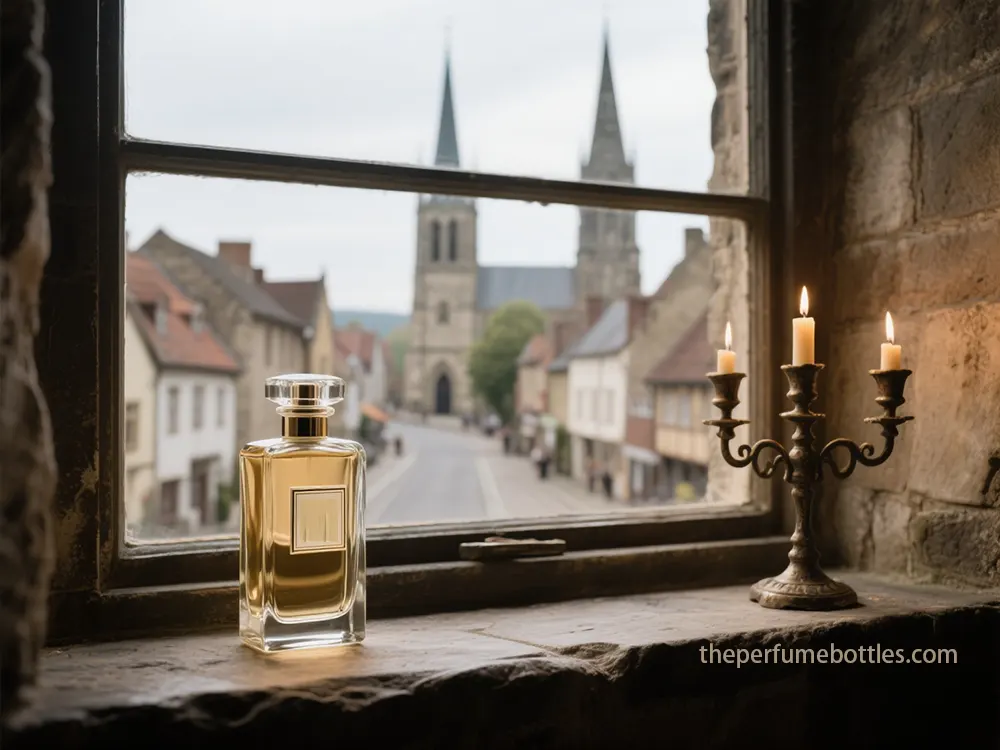
Perfume Bottle Form & Material for Brands og Wholesale Glass Perfume Bottle Leverandører
Form og materiale af parfumeflaske er strategiske for brandidentitet, produktintegritet og bæredygtighed.

Fremtiden for miljøvenlige æteriske olie-rulleflasker
Miljøvenlig rulleflaske med æterisk olie: trends, genbrugsglas, planteplastik og strategier for brands
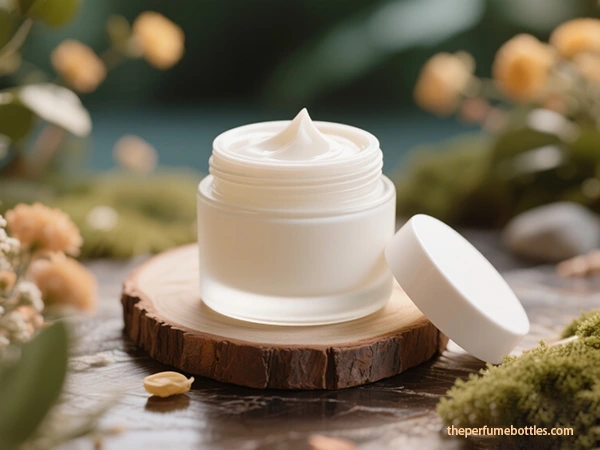
Sammenligne de ledende kosmetikemballageleverandører
Opdag de bedste udviklere af kosmetisk emballage til mængdeordrer. Sammenlign pålidelige producenter, der tilbyder skræddersyet
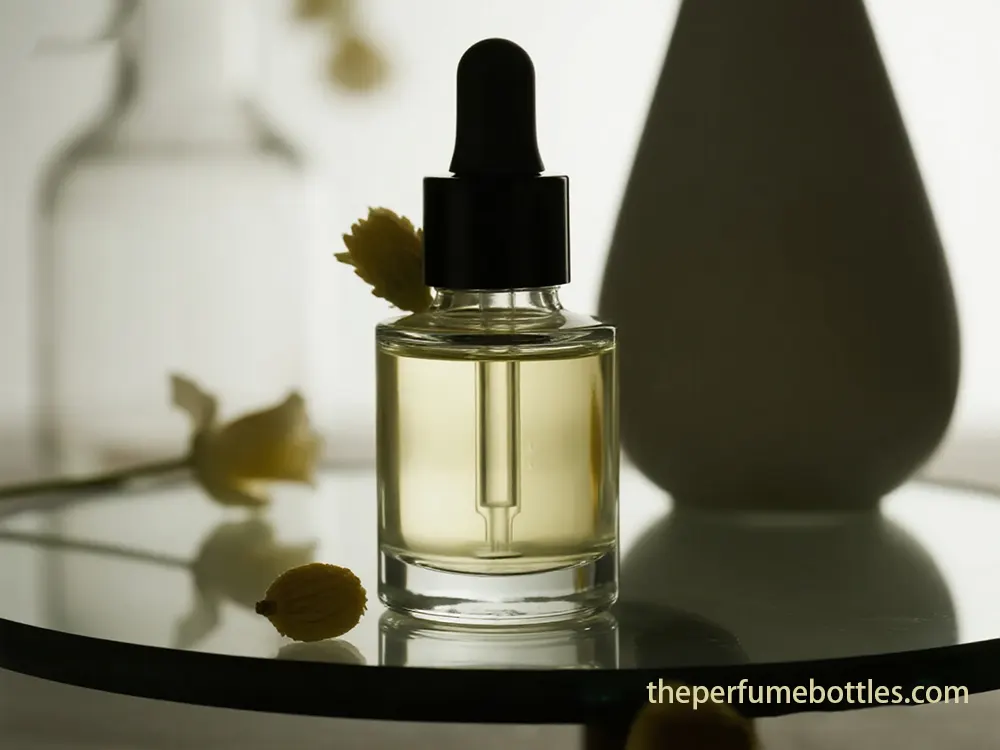
Case Study: Custom Little Dropper Bottles for a U.S. Skincare Brand
Custom little dropper bottles by Vesseluxe with clear branding on limited surfaces, ensuring elegance
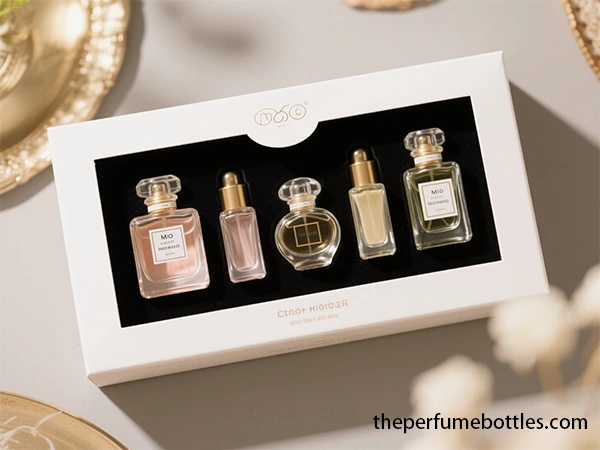
Fra gavesæt til kampagner: Hvordan mini-parfumeflaskesæt øger forbrugerengagementet
Opdag, hvordan gaveidéer til mini-parfumeflasker øger brandappellen og forbrugerengagementet gennem kreative reklamer og emballage.
- +86 186 5178 1159
- [email protected]
- Man-søn 07:00-21:00
Tags
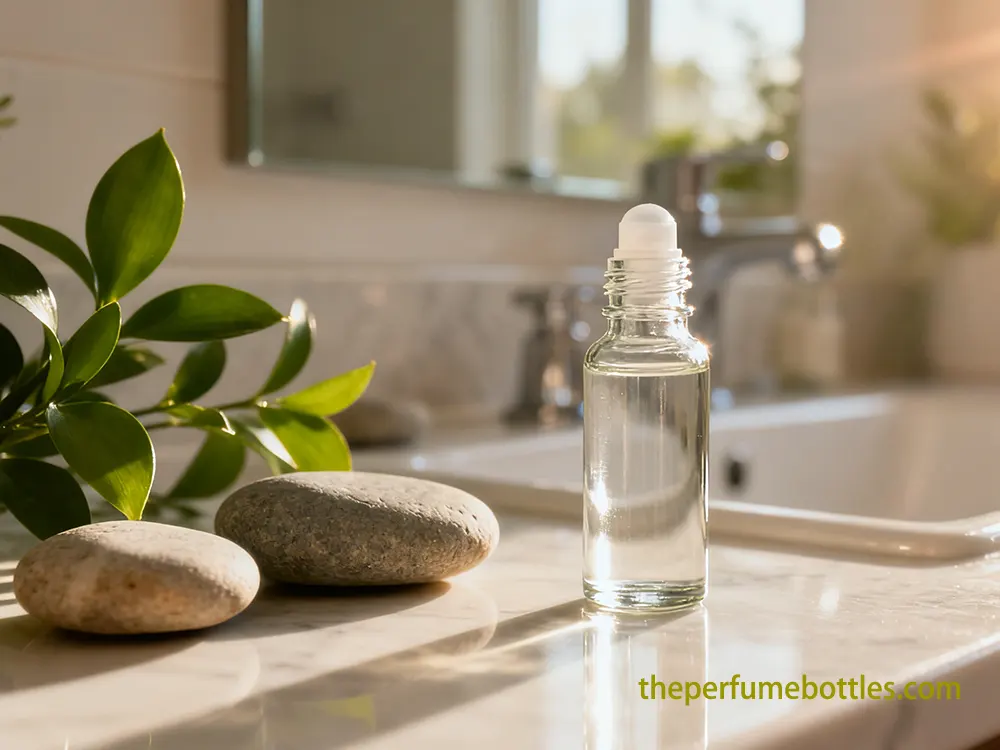
Casestudie: Vores fabrik til glasrulleflasker leverede emballage til et mærke af æteriske olier
En casestudie om, hvordan en fabrik til glasrulleflasker løste problemer med rullestabilitet og holdbarhed med tynde halse for at levere pålidelige, lækagefri premiumflasker.
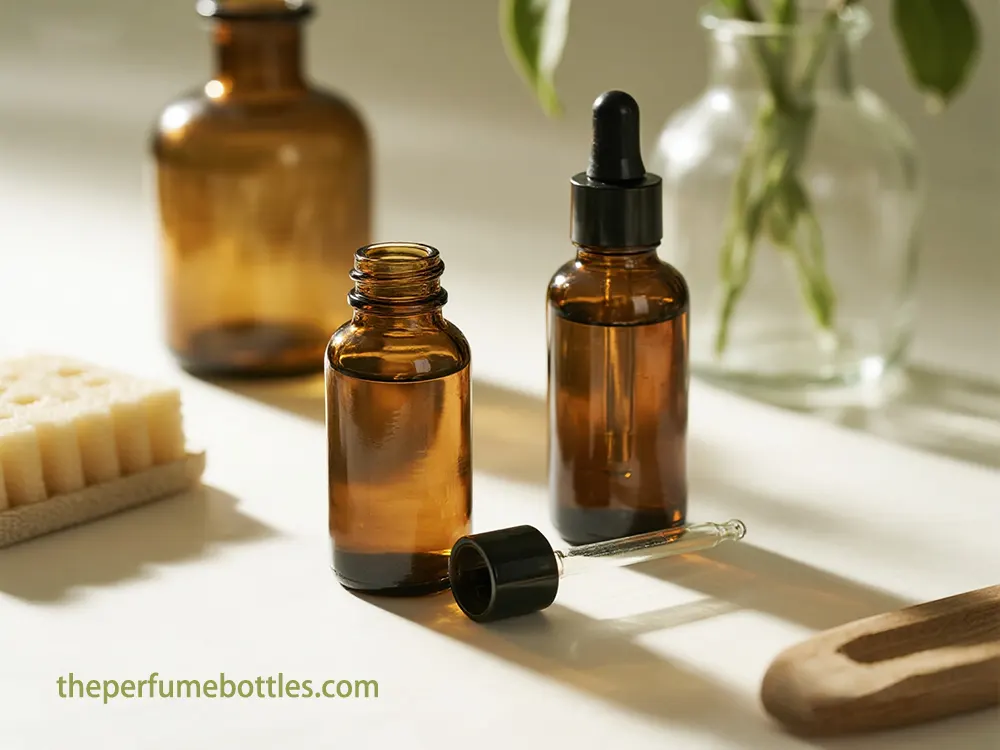
Casestudie: Hvordan en fabrik til fremstilling af glasdråberflasker hjalp et mærke med helbredende olier
En casestudie af, hvordan en fabrik til glasdråbeflasker hjalp et portugisisk mærke med helbredende olier med at opnå præcis dosering, forbedret greb og førsteklasses, brugerdefineret emballage.
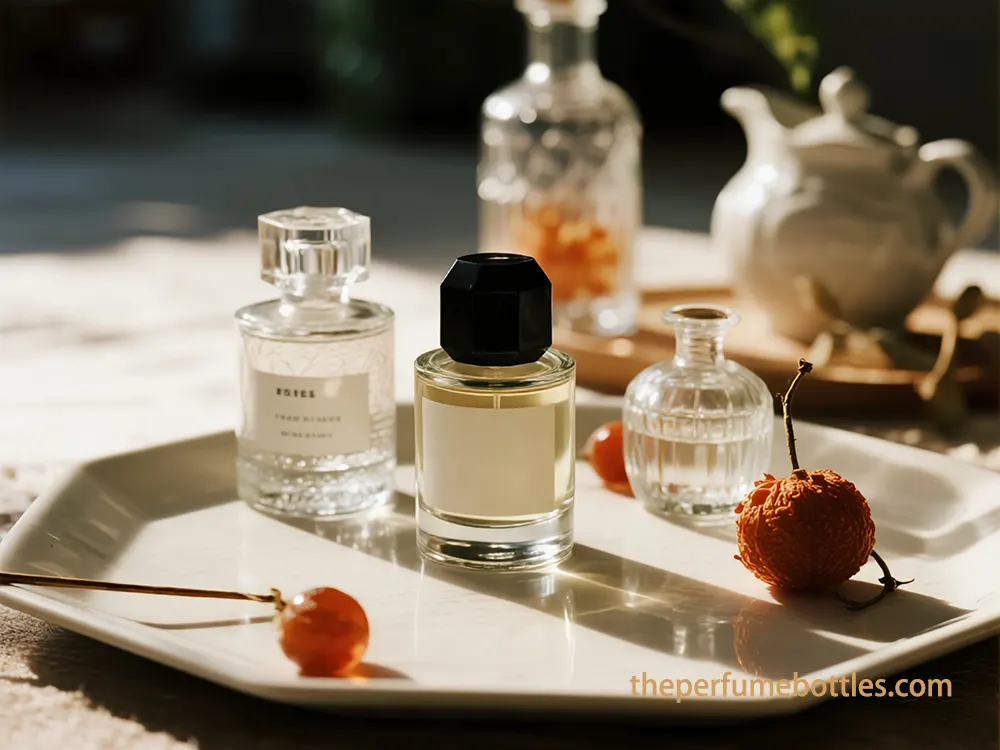
En dufts rejse fra en fabrik til glasparfumeflasker og videre
Opdag hvordan en førende fabrik for glasparfumeflasker, avanceret kemi og global logistik
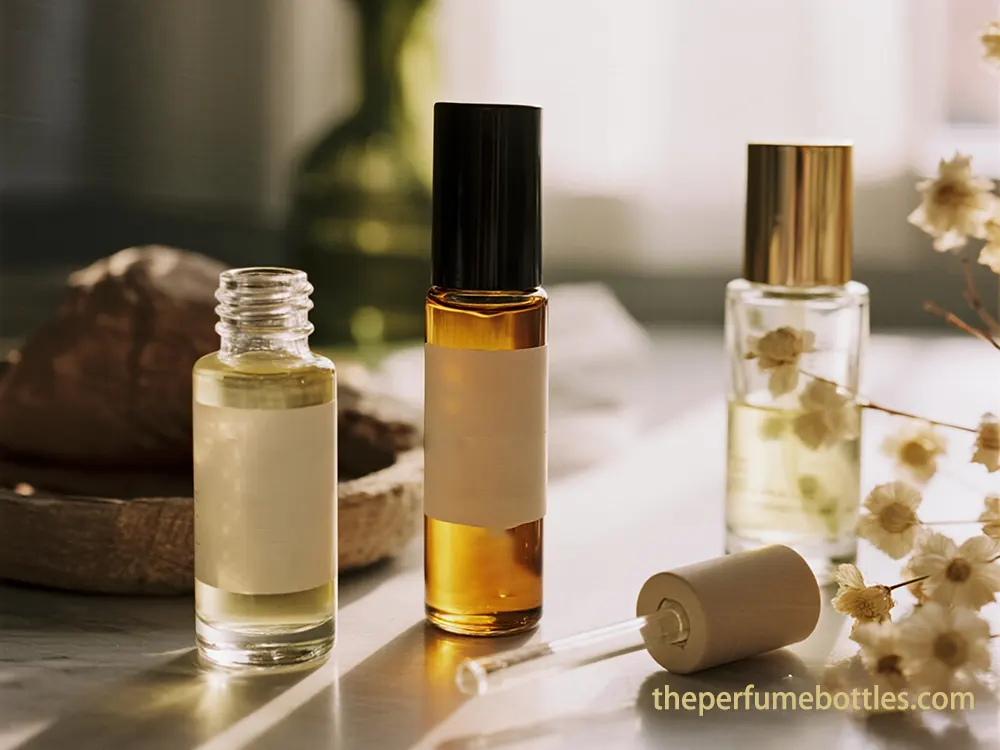
Producenter af glasrulleflasker i 2026 – Vigtige fremtidige tendenser
Udforsk trends i 2026 med en førende producent af glasrulleflasker – miljøvenlig emballage, smart design og bæredygtighed

